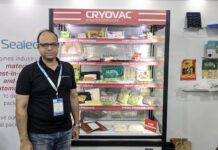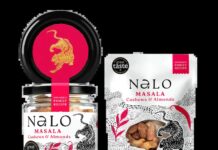
In monocarton production, a gap is developing between the Indian mid-level converters (broadly with an annual turnover between Rs 45 crore and Rs 125 crore) and the few larger converters who have established multiple production locations across the country to be closer to the multiple production and packaging plants of the large consumer product companies. The large converters are quick to acknowledge, however, that there are many smaller monocarton companies that are doing excellent work and retain their own profitability and growth trajectory as long as they stay away from high debt.
It is the slightly larger mid-level carton converters who have taken on debt that are facing challenges in taking what they had earlier thought were their natural or logical next steps to growth – even though the industry as a whole is growing. The problems seem to arise when these mid-level players acquire bits and pieces of high technology at premium prices because they do not understand the many other components of the production and marketing equation to make the project fly. Sometimes it is because they try to do too many things at once or because they get into areas where they are not able to control the entire process and become too dependent on outsourcing a critical aspect of their process. This makes them relatively unresponsive, inefficient, and uncompetitive in pricing.
For one thing, the challenges to them are coming from the several large multi-location players, who simply because of size and better management, have much better access to equity investment and public financing at a time when the banks lack confidence in smaller companies. At the same time, volatile and rising raw material prices in short supply have driven up the cost of working capital. The mid-level converters can neither negotiate the price of paperboard nor buy and warehouse sufficient quantities to meet future commitments at a given price to their customers. Thus the bigger brands prefer the bigger converters. Big likes big.
Secondly, the large converters have been upgrading their technology and have opened up a gap in the efficiency of their production with less wastage. Their capacity building has also compelled them to make their professional sales operations more aggressively competitive in smaller cities and towns and new segments and brands. They are far more amenable to producing smaller volumes than ever before as long as their capacities are utilized. They are able to absorb and balance some of the asymmetrical demand and price differences across segments and geographies since their plants are located across the country.
Thirdly, reliable industry experts tell us that for at least 15 to 20 of the global private equity investments companies active in India, a stake in the packaging industry has become a mandate. Knowing that investors are on the prowl has led to some of the medium-sized companies taking steps to upgrade their performance or bulking up their balance sheets to attract potential suitors. Lastly, the awareness of the large monocarton players that banks, investors, and shareholders are ready to support them, has meant that they also need to grow quickly enough to keep up with their peers. And to grow quickly enough to satisfy investors means that inorganic growth or acquisitions can save time in comparison to establishing a greenfield project. The problem is that they are choosy and will only acquire a company if they can quickly add a missing packaging segment or a location in which they are not yet present.
However, not all carton converters are viable targets for acquisition. This has now become an organized activity with professionals tasked with this function among the larger companies in which private equity already has a stake. The professionals look beyond reputation, profitability, and fixed assets. They are keen to acquire or invest in those converters who bring something extra to the table such as rapid growth, a strong client list, and high technology that can be easily integrated with their existing workflows and standards of operation and efficiency.
This means that the investment deals are likely to be lean and mean with valuations not including fixed assets unless there is unlocked value and room to grow in these. Ironically, the most attractive and likely to be acquired converters are those who are on the verge of successful growth on their own. For the rest, another type of consolidation could possibly work – this might be a restructuring of the management and a total overhaul of the production and marketing processes together with refinancing. This too is happening but it is a more difficult type of consolidation and it will take some time to understand if the type of investors and professionals needed for this more complex solution are available in the country to make it a success.
IndiFoodBev — authentic, impactful and influential
An English-language food and beverage processing and packaging industry B2B platform in print and web, IndiFoodBev is in its third year of publication. It is said that the Indian food and beverage industries represent approximately US$ 900 billion in revenues which implies more than 20% of the country’s GDP. Eliminating the wastage on the farmside can help to deliver more protein to a higher number of the population apart from generating sizable exports. The savings in soil, seeds, water, fertilizer, energy and ultimately food and nutrition could be the most immense contribution that country is poised to make to the moderation of climate change.
To improve your marketing and grow sales to the food and beverage processing and packaging industry, talk to us. Our research and consulting company IppStar [www.ippstar.org] can assess your potential and addressable markets in light of the competition. We can discuss marketing, communication, and sales strategies for market entry and growth.
Suppliers and service providers with a strategy and budget for targeted marketing can discuss using our hybrid print, web, video, and social media channels to create brand recognition linked to market relevance. Our technical writers are ready to meet you and your customers for content.
The second largest producer of fruit and vegetables in the world is continuously expanding processing capacities and delivery systems with appropriate innovative technologies. We cover product and consumer trends, nutrition, processing, research, equipment and packaging from farm to thali. Get our 2025 media kit and recalibrate your role in this dynamic market. Enhance your visibility and relevance to existing markets and turn potential customers into conversations. Ask for a sample copy of our bi-monthly in print or our weekly IndiFoodBev eZine each Wednesday.
For editorial info@ippgroup.in — for advertisement ads1@ippgroup.in and for subscriptions subscription@ippgroup.in
Naresh Khanna – 10 February 2025
Subscribe Now










